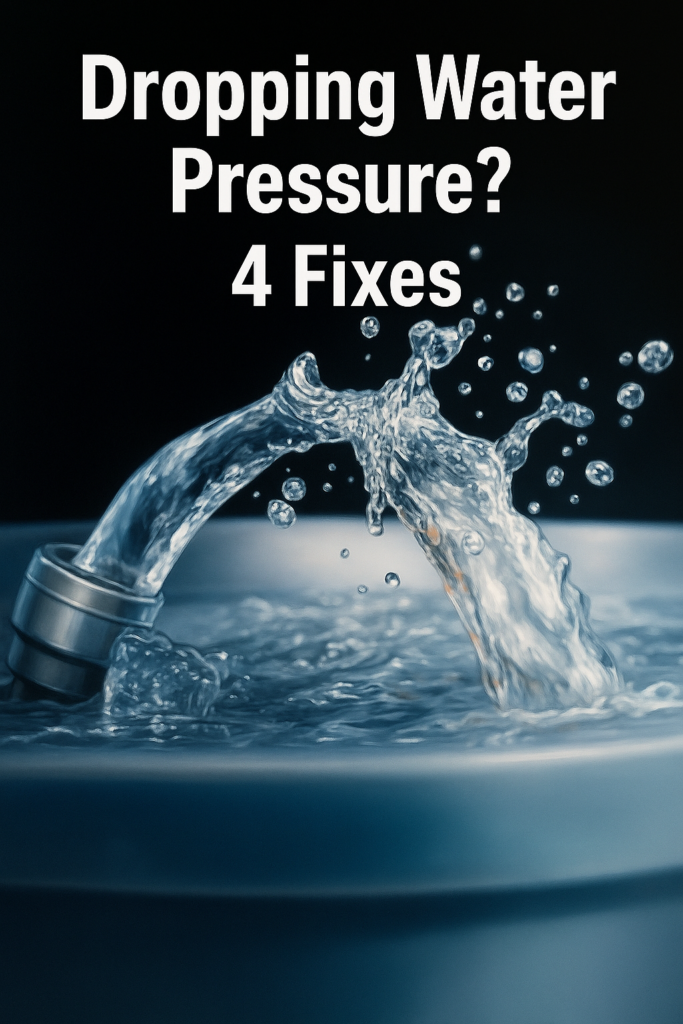Nothing’s more irritating than hearing water dripping from a faucet you’ve already turned off. Not only is it a nuisance, but it can also increase your monthly water bill significantly.
So, why does this happen? Is this a DIY fix or a situation that demands a plumber’s attention?
In this guide, we’ll answer all your questions about leaking faucets, plumbing issues, and exactly how to handle them.
If your faucet keeps running in your kitchen or bathroom even after you’ve shut it off, here’s exactly what you need to do.
Why Does My Faucet Keep Running When Turned Off? (And How to Fix It)
If water continues flowing after you’ve turned your faucet off, there are a few possible causes, typically involving the faucet’s internal components.
Common Causes Include:
- Damaged or faulty cartridge
- Clogged or defective valve seat
- Worn-out washers or gaskets
Here’s a helpful video that might help diagnose the problem. Otherwise read on for faucet fixes.
It’s crucial to distinguish between a leak (slow dripping) and a continuous run (steady flow). A continuous run can signal a more serious issue, such as hidden leaks within walls—especially alarming if water still runs after shutting off your main water valve. In such cases, you should promptly contact a plumber.
How to Inspect a Leaky Faucet
Before repairs, you need to identify the problematic parts inside your faucet:
- Turn off the water supply valves beneath your sink or the main water valve.
- Cover the drain to prevent losing small parts.
- Remove the faucet handles and internal components (valve stems or cartridges).
- Examine each part carefully. Look for corrosion, damage, or mineral buildup.
- Replace damaged parts. Plastic components with mineral buildup can be soaked in vinegar (avoid soaking rubber components).
How to Fix Different Types of Faucets
Each faucet type has its specific repair method. Always purchase replacement parts suitable for your faucet type. If you’re unsure about which parts you need, remove the damaged ones and take them to a plumbing supply store.
General tools needed:
- Flathead and Phillips screwdrivers
- Allen wrench
- Plumber’s grease
- Channel locks or adjustable wrench
- Cloth or rag
Fixing a Ball Faucet
Ball faucets have a single handle moving around a ball-shaped cap, commonly found in kitchens:
- Remove the decorative cap and loosen the hex screw to remove the handle.
- Protect the sink with a cloth. Loosen the collar with a wrench.
- Take apart the faucet (packing, cam, and ball valve).
- Photograph the setup for reassembly reference.
- Replace the springs and seats using a hex wrench.
- Reassemble, referring to your photo.
- Test by turning the water back on.
Fixing a Disk Faucet
Disk faucets are modern single-lever faucets controlling hot and cold water via ceramic disks:
- Use an Allen wrench to remove the handle screw and lift the handle.
- Remove the decorative cover and the brass retaining piece.
- Replace the old cartridge with a new one.
- Remove and replace the O-ring after applying plumber’s grease.
- Reassemble all parts carefully.
Fixing a Cartridge Faucet
Cartridge faucets typically feature smoother operation with one or two handles:
- Remove the decorative cap and faucet handle.
- Take out the cartridge and any retaining clips.
- Replace worn O-rings, applying plumber’s grease on new ones.
- Reinsert the cartridge and reassemble the faucet.
Fixing a Compression Washer Faucet
Compression washer faucets are traditional, two-handled faucets requiring tightening to stop water flow:
- Remove the decorative cap covering the handle bolt and unscrew the handle.
- Loosen the packing nut and stem using two wrenches.
- Replace the worn washer at the bottom of the stem (grease new washer).
- Replace the seat washer within the faucet.
- Reassemble all parts securely.
When to Call a Plumber

Persistent dripping or continuous running water might signal significant plumbing issues. If turning off your main valve doesn’t stop the water flow, contact a professional immediately. Ignoring the problem could result in extensive water damage.
For minor dripping issues, following these DIY steps can often resolve the problem effectively. Regular maintenance and timely replacement of damaged parts can also prevent future leaks.



